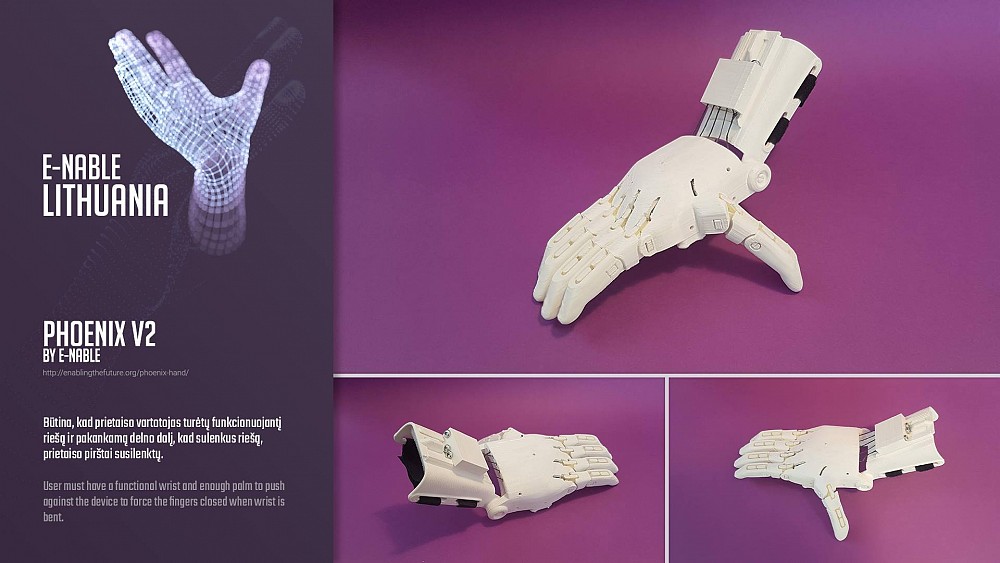
e-NABLE Lithuania
 Inspired by thousands of passionate volunteers of the international volunteer network e-NABLE established in 2012, we decided to join it. Its members are engineers, physicians (therapeutists, prosthetists), designers, teachers, students, parents and many others who at their leisure, free of charge create and innovate open source 3D models, print, prepare for usage and share assistive devices made with the help of 3D printers. 3D printed assistive devices make life easier for amputees
Inspired by thousands of passionate volunteers of the international volunteer network e-NABLE established in 2012, we decided to join it. Its members are engineers, physicians (therapeutists, prosthetists), designers, teachers, students, parents and many others who at their leisure, free of charge create and innovate open source 3D models, print, prepare for usage and share assistive devices made with the help of 3D printers. 3D printed assistive devices make life easier for amputees , i.e. for those who are missing a forearm, a hand or a part of it, or fingers.
, i.e. for those who are missing a forearm, a hand or a part of it, or fingers.We purchased our 3D-printer after we had learnt about the e-NABLE volunteer movement and the possibility to apply 3D printing with the purpose of improving the quality of life for disabled people . We were deeply touched by the stories about children having such problems and a high price of prostheses developed by medical professionals as well as protracted manufacturing and waiting time for suitable devices. Although assistive devices produced with help of 3D printing are not meant to replace medical prosthesis, it can make life easier for the ones waiting for it. Because of low-cost and the volunteer principle it might be an excellent solution for families whose children are in dire need of such devices. It takes a long time to develop individually adapted medical prostheses which are expensive and as children grow out of them fast, they must be replaced by new ones to fit changing body parts, whereas 3D printed assistive devices take very little time to be made and are custom fitted for an individual. We assume that e-NABLE assistive devices might be a perfect temporary alternative, easy to make and replace while waiting for a new or repaired one.


